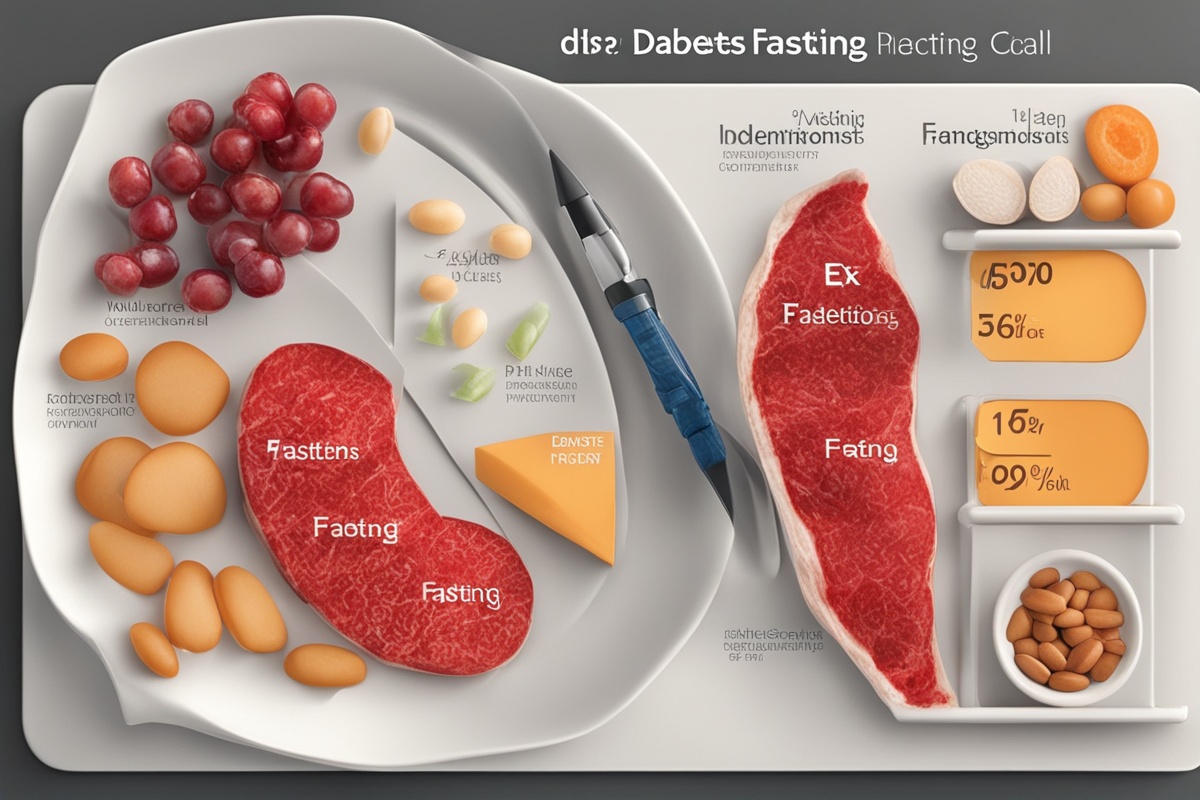Diabetes is a condition that millions of people navigate daily, and one of the most critical aspects of managing it lies in controlling fasting blood sugar levels. Whether you’re newly diagnosed or a long-time warrior against high glucose levels, understanding how fasting—both as a measurement and a lifestyle practice—can influence your health is a game-changer. In this post, we’ll dive deep into practical strategies, backed by science, to help you stabilize your blood sugar levels, especially during fasting periods. Let’s explore how you can take charge of your diabetes with actionable tips, a focus on fasting glucose control, and a holistic approach to wellness.
What Is fasting Blood Sugar and Why Does It Matter?
When we talk about fasting blood sugar, we’re referring to the glucose level in your blood after you’ve gone without food for at least 8 hours, typically overnight. This measurement is a cornerstone in diabetes management because it reflects how your body regulates glucose without the influence of recent meals. For someone with diabetes, high fasting glucose levels can signal poor insulin function or resistance, increasing the risk of complications like heart disease or nerve damage. According to the American Diabetes Association, a normal fasting blood sugar range is between 70-99 mg/dL, while levels consistently above 126 mg/dL may indicate diabetes. Keeping this number in check is vital for long-term health, and understanding your fasting glucose trends can guide your treatment plan.
The Role of Fasting in Diabetes Management
Fasting, as a deliberate practice, has gained traction in health circles for its potential benefits in managing blood sugar control. Intermittent fasting, for instance, involves cycling between periods of eating and fasting, which can help improve insulin sensitivity and lower fasting blood glucose levels. Research published in the journal Diabetes Care suggests that intermittent fasting may reduce insulin resistance in people with type 2 diabetes. However, fasting isn’t a one-size-fits-all solution. If you’re considering it, consult your healthcare provider to ensure it aligns with your medication schedule and overall health needs. When done correctly, fasting can be a powerful tool to stabilize your fasting blood sugar and support metabolic health.
Dietary Tips to Stabilize Fasting Glucose Levels
Your diet plays a starring role in controlling fasting blood glucose. The goal is to choose foods that prevent spikes in blood sugar while supporting steady energy levels, especially during fasting windows or overnight. Here are some practical dietary strategies to help you manage your blood sugar fasting numbers effectively:
- Focus on low-glycemic-index foods like whole grains, legumes, and non-starchy vegetables to avoid rapid glucose spikes.
- Incorporate healthy fats from sources like avocados, nuts, and olive oil to slow digestion and stabilize blood sugar.
- Limit refined sugars and processed carbs, which can cause dramatic fluctuations in fasting glucose levels.
- Stay hydrated—dehydration can elevate blood sugar, so aim for at least 8 cups of water daily.
- Consider small, balanced meals or snacks before fasting periods to prevent hypoglycemia if you’re on insulin or certain medications.
Lifestyle Habits to Support Fasting Blood Sugar Control
Beyond diet, your daily habits can make or break your efforts to manage fasting blood glucose. Lifestyle tweaks can enhance your body’s ability to regulate glucose, even during fasting states. Let’s look at some science-backed practices you can adopt:
- Exercise regularly: Moderate activity like walking or yoga for 30 minutes most days can improve insulin sensitivity and lower fasting glucose.
- Prioritize sleep: Poor sleep can disrupt hormones like cortisol and insulin, leading to higher blood sugar levels in the morning.
- Manage stress: Chronic stress raises cortisol, which can spike fasting blood sugar—try mindfulness or deep breathing exercises.
- Monitor consistently: Use a glucometer to track your fasting glucose levels daily and spot patterns or triggers.
Potential Risks and Precautions with Fasting and Diabetes
While fasting can benefit blood sugar regulation, it’s not without risks, especially for those with diabetes. Prolonged fasting or skipping meals without proper planning can lead to hypoglycemia (low blood sugar), particularly if you’re on insulin or sulfonylureas. On the flip side, fasting without guidance might also cause hyperglycemia if your body releases stress hormones like cortisol to compensate for low energy. Always work with a healthcare professional to tailor a fasting plan to your needs. Additionally, keep an eye on your fasting blood sugar test results and adjust your approach if you notice unusual fluctuations. Safety first—diabetes management is a balancing act, and fasting should support, not hinder, your health goals.
Partnering with Technology and Medical Support
Modern tools and medical guidance can elevate your diabetes management game, especially when it comes to tracking fasting blood sugar levels. Continuous glucose monitors (CGMs) offer real-time insights into how fasting impacts your glucose, helping you make informed decisions about meals and activity. Apps like MySugr or Glucose Buddy can also log your fasting glucose readings and share them with your doctor. Don’t hesitate to schedule regular check-ups to discuss your fasting blood glucose trends and adjust medications if needed. Combining technology with professional advice ensures you’re not just managing diabetes but thriving despite it.
As we wrap up, remember that mastering fasting blood sugar control is a journey, not a sprint. By understanding the significance of fasting glucose, incorporating mindful fasting practices, optimizing your diet, and embracing supportive lifestyle habits, you can take significant strides in diabetes management. Always personalize your approach—work with your healthcare team to ensure fasting and other strategies align with your unique needs. With consistency and the right tools, you can keep your fasting blood glucose in a healthy range and live a vibrant, balanced life. What’s one small step you’ll take today to improve your blood sugar control? Let’s start the conversation below!






